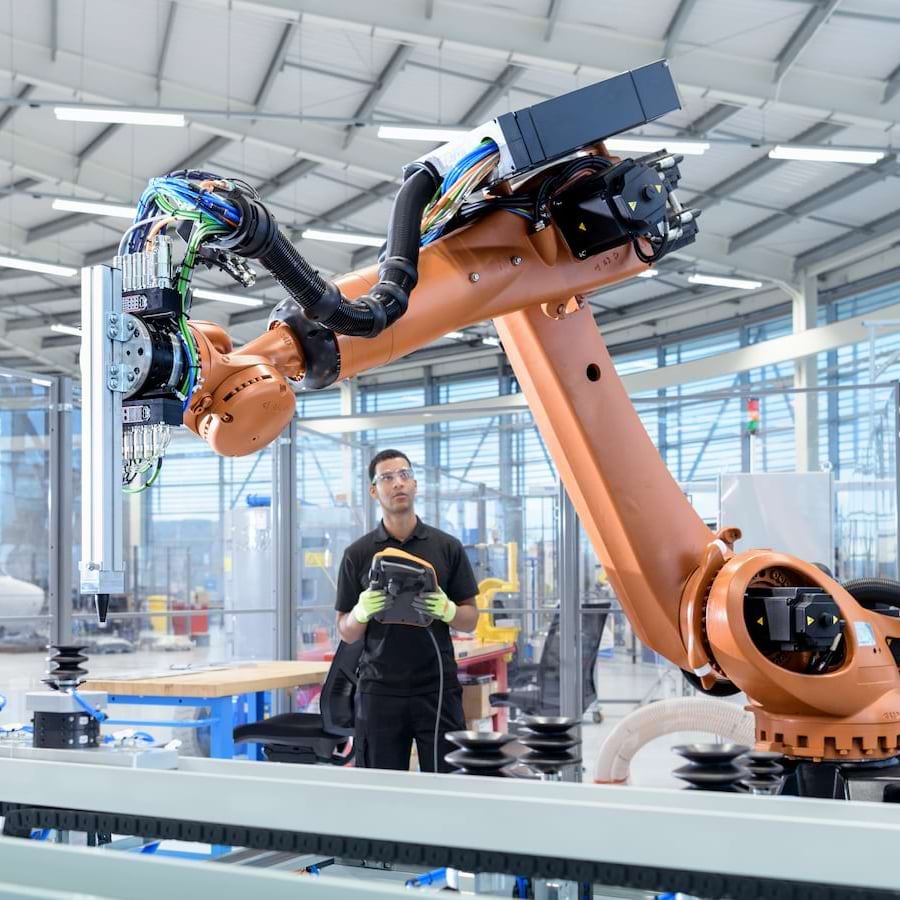
New world. New skills.
Everyone should be able to live, learn, work and participate in the digital world.
Rapid shifts in how and where we work have highlighted the gap between existing skills and those required for jobs in the digital world.
Upskilling the Middle East workforce to bridge the digital divide is a complex problem that requires business leaders, governments and educators to work together to make the world a more resilient, more capable and more inclusive place.
We’ve been on a journey to upskill our own people and we’re excited to share what we've learned and help businesses, governments, local communities and individuals accelerate their upskilling journey.
Building a world where everyone can thrive
Upskilling our business, clients and communities in the region means providing people with the knowledge, skills and tools they need to adapt to the digital future. At PwC Middle East, this goes beyond just driving business value. We’re giving our people opportunities to apply their skills beyond the workplace, helping build a more diverse, tech-skilled workforce, and creating ground-breaking digital solutions for our clients and our communities. There is an urgent need for organisations, governments, educators and citizens to come together to find solutions to this growing problem and we are committed to playing a part in tackling this.

Common challenges when upskilling a workforce
Realizing ROI from upskilling efforts
Providing employees with the skills necessary to compete
Engaging disaffected, disengaged employee culture
Motivating the workforce while transforming
Managing disruption to industry and business
How to start upskilling
Building on our work with clients, we are working with other organisations across the world like UNICEF, to improve digital skills in communities where the need is greatest. Still, more must be done if we are to ensure everyone has the opportunity to learn, work and participate in the digital world. This is at the heart of our purpose.
- How do organisations upskill?
- How is PwC reaching those at risk of being left behind?
- How can businesses, governments and institutions work together on this complex issue?
How do organisations upskill?
Organisations are transforming their workforces to drive productivity, innovation and growth. Upskilling is key. It’s about anticipating the right skills for the future, laying the cultural foundation, delivering modern upskilling programmes, and building a learning and development function with the right EdTech to deliver a vastly better return on upskilling investment. Find out how we can help you upskill.
How is PwC reaching those at risk of being left behind?
With 71 million young people worldwide unemployed, and between 20-40% of the jobs currently held by 16-24 year olds at risk of automation by the mid-2030s, developing the skills required for the digital age is one of the most acute challenges communities are facing.
PwC and UNICEF are collaborating to help upskill millions of young people around the world. The collaboration supports Generation Unlimited, a multi sector partnership aimed at helping 1.8 billion young people transition from school to work by 2030. Learn more.
PwC’s collaboration with UNICEF is just one of the many ways PwC is helping communities upskill and builds on the network’s existing community impact programmes that have been focusing on this challenge for many years.
How can businesses, governments and institutions work together on this complex issue?
Solutions to the challenge of upskilling will need to be developed at the local, regional and national level, and no one organisation can do this alone. Government leaders and policymakers need to ensure that citizens have the knowledge to participate, and they themselves have the knowledge to drive discussion on the future of technology and regulation. Institutions, such as those that make up the education system, need to digitally transform themselves and at the same time provide services that are fit for the future.
Read about PwC’s involvement in the Luxembourg Digital Skills Bridge project, a government-led initiative which brought together stakeholders across business, trade unions and training providers to deliver a comprehensive national solution for developing workforce skills.
The need to upskill is a complex problem that will require decision-makers — educators, national, regional and local government administrators and business leaders — to come together.
The PwC journey: What we learned on our upskilling journey
Our New world. New skills. investment started with digitally upskilling our own people. We invested in learning applications and immersive training programs for our people to develop storytelling, data analysis, visualization and automation skills. Watch the video to learn how Patricia is able to experiment and innovate in ways that are meaningful to her everyday work, and how we’re bringing this approach to life for our clients and the communities we serve.
Contact us


Randa Bahsoun
Partner, Government & Public Sector Labour and Social Development Leader, PwC Middle East
Tel: +971 4 304 3487







